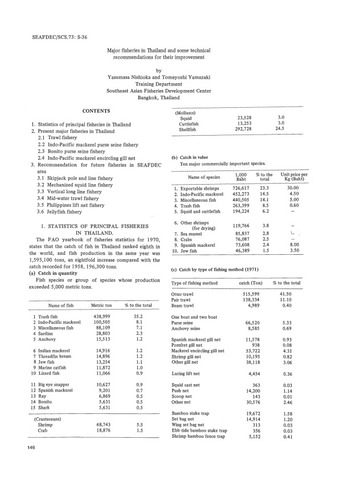The Institution of the Set Net Fisher Group for the Development of Sustainable Coastal Fisheries Management: The Case of Rayong Province, Thailand
Share
ບົດຄັດຫຍໍ້
Main objective of the study is to describe the set net fishers group functioning in set net fisheries management. The group function is focused on practicing in the group administrative affair and management with cooperative principle. The finding results found that the set net fishers group had two major functions. One is in capturing and harvesting activities. Other is related to the group administrative affair. Considering capturing and harvesting activities, the group members had chiefly participated in hauling net for harvest, maintenance and repair net and selling fishes on beach. Considering on administrative affair function, large number of the group member joined the group meeting, looked for new member to join the group, and helped developing the group system. The future group development might threaten by uncertain yield served to market demand, conflict of the group member’s opinion, etc. A solution solved threats of the future group development might need an official announcement on the set net fishing areas, and more number of set net group in order to establish network.
Suggested Citation
Suanrattanachai, P., Kaewnuratchadasorn, P., Thapthim, N., & Munprasit, A. (2008). The Institution of the Set net Fisher Group for the Development of Sustainable Coastal Fisheries Management: The Case of Rayong Province, Thailand. Training Department, Southeast Asian Fisheries Development Center.
Collections
- SEAFDEC/TD [85]
Related items
Showing items related by title, author, creator and subject.
-
The Status of Fisheries in the Republic of Maldives
Faiz, Mohamed (Training Department, Southeast Asian Fisheries Development Center, 1997)The paper discusses the tuna fisheries in Maldives which dominates its fishing industry. Apart from a very strong domestic market, tuna is also the main export commodity of the country. Moreover, reef fisheries such as, ... -
Major fisheries in Thailand and some technical recommendations for their improvement
Nishioka, Yasumasa; Yamazaki, Tomeyoshi (Japan International Cooperation Agency, 1977)Presented in this paper is the development of fisheries industry in Thailand. The data on the production of the principal fisheries species and major fishing methods are also presented. Also included are the recommendations ... -
Status of Fishing Conditions in Cambodia
Sour, Kim; Vuthy, Ros (Training Department, Southeast Asian Fisheries Development Center, 1997)Fisheries in plays a very important role in Cambodia’s national economic development. Total fish catch production in 1996 was 104 310 tones, about which 60% was contributed by inland capture fisheries, 30% by marine capture ...




